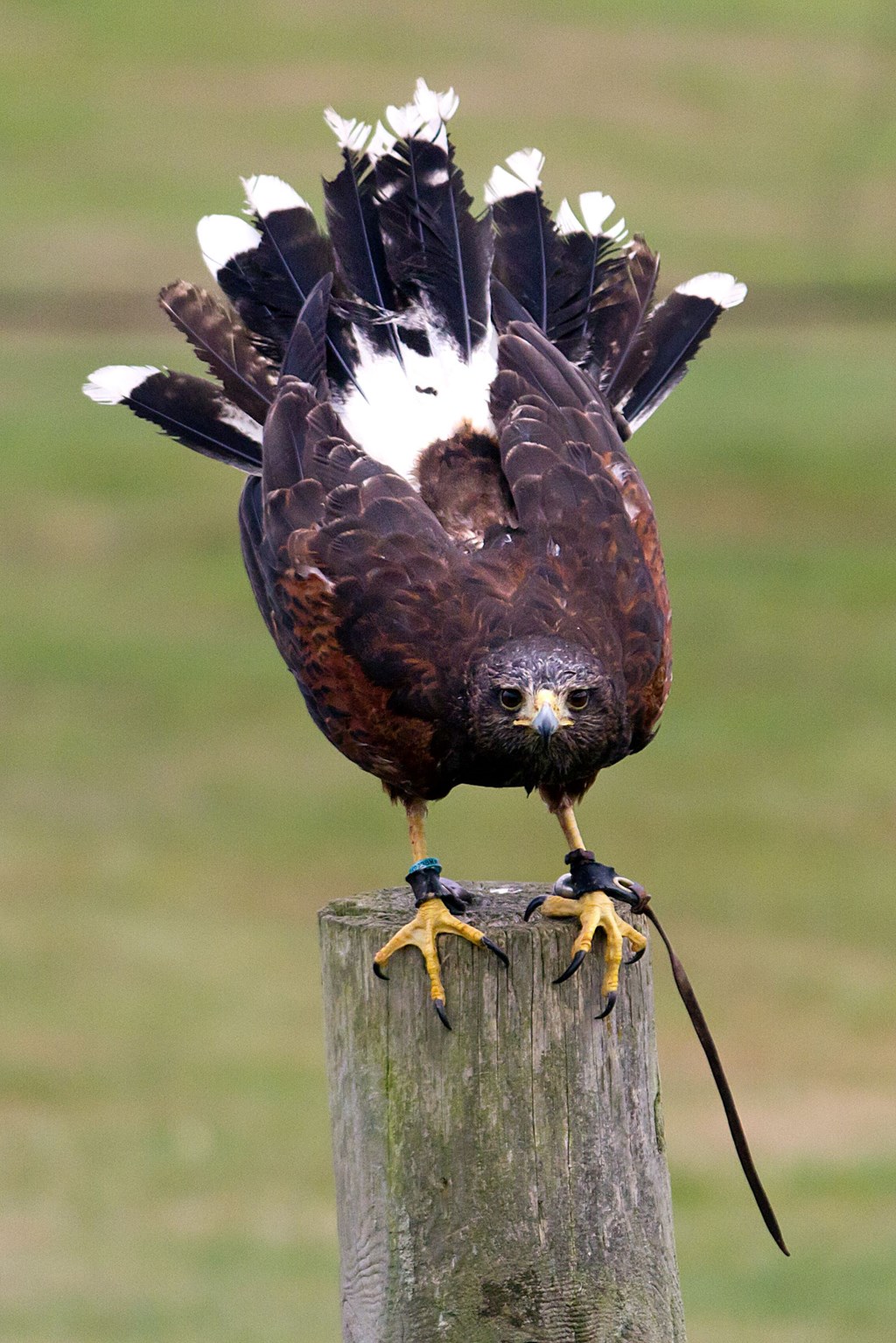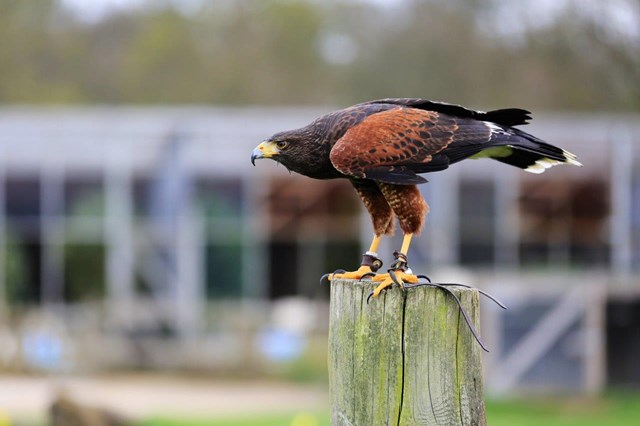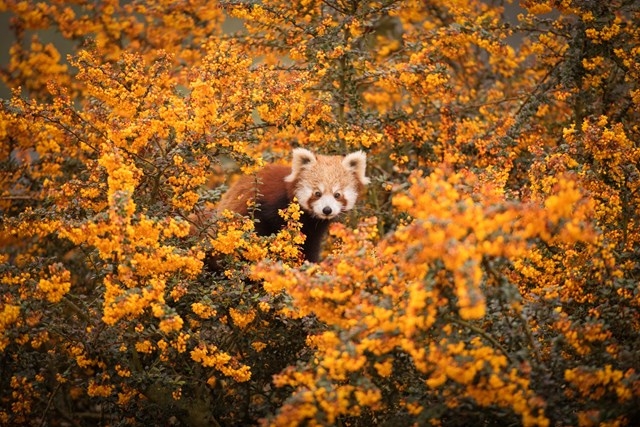Overview
The Harris Hawk is one of the most popular birds used in the sport of falconry. It was named the Harris Hawk by John James Audubon, a famous nineteenth century naturalist, named after his friend and fellow naturalist Edward Harris. It first featured in his famous illustrated book ‘Birds of America’, of which we have one of few existing copies here at Woburn Abbey. Although it is called a ‘hawk’ it is not actually part of the hawk family, but is more closely related to the buzzard family.

All about us
| Distribution: | United States and parts of South America |
|---|---|
| Habitat: | Dry bush country, desert, canyons and scrub land |
| Height: | 46 - 76cm in length |
| Weight: | 710 - 1,020g |
| Lifespan: | Wild 11 years, in captivity up to 25 years |
| Threats: | Accidental electrocution and habitat loss |
About us
Scientific name: Parabuteo unicinctus
The Harris’s hawk is a large bird, which weighs around 710g to 1,020g, and is 46cm to 76cm long. Their wingspan can be 100cm to 120cm. The female is usually around 40% bigger in size.
They have dark brown plumage, with chestnut brown shoulders, thighs, and wing linings. There is a white bar along the tips of the tail feathers, used for communication. The legs are long, un-feathered, and yellow in colour. Their legs are long to allow them to perch on plants such as cacti without damaging their body, and to protect from their prey items, and the skin is very tough. The wings are large and broad, as is the tail, used to help soar in thermals.
Its scientific name ‘parabuteo’ means buzzard-like, and ‘unicinctus’ means ‘once girdled’, referring to the belt of white feathers on the end of their tail.


